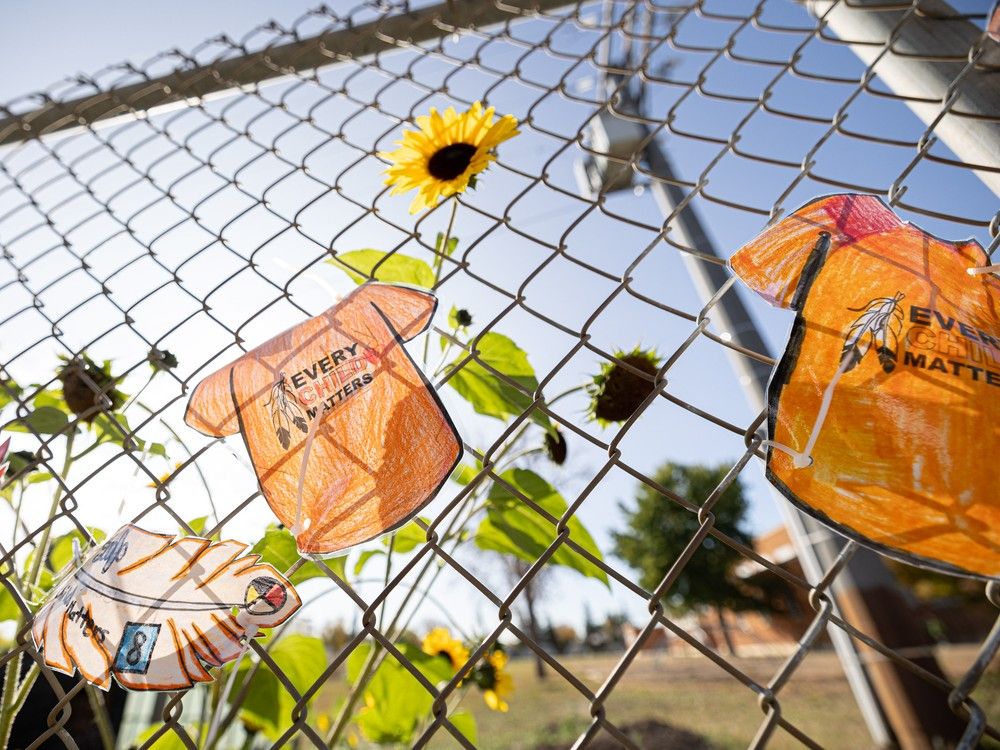Education
Remembering the Cost of Colonialism on Indigenous Peoples

On September 30, 2023, Canada observes Orange Shirt Day, officially recognized as Truth and Reconciliation Day. This day serves as a solemn reminder of the painful legacy endured by Indigenous peoples, while also holding hope for a more equitable future. It acknowledges the tragic history of residential schools, which were implemented by the federal government as part of a broader colonial agenda targeting First Nations.
The roots of these schools can be traced back to the governance models established by colonial powers. Following the 1759 fall of Quebec, British authorities faced the challenge of administering this new colony. They turned to churches to manage social services, education, and hospitals, creating a system that effectively removed the burden of governance from the British. This arrangement exemplified classic colonialism, where Indigenous peoples’ needs and rights were overlooked.
Residential Schools: Cultural Genocide
According to treaty agreements, schools were to be established on reserves, with churches overseeing their operations. Implicit in these arrangements was a devastating goal: the cultural assimilation of Indigenous children. The intention was to erase Indigenous identity, a process that can be characterized as cultural genocide, though it was never explicitly stated in official documents.
Resistance to these schools was widespread. Many children attempted to escape or were hidden from authorities tasked with enforcing the system. Tragically, this resistance often resulted in dire consequences. The early residential schools, constructed primarily from wood, posed significant fire hazards. In Saskatchewan, several schools burned down. Notably, a fire at the Beauval residential school in 1960 resulted in the deaths of 19 boys aged between eight and eleven, a stark reminder of the dangers faced within these institutions.
The physical structures of the schools reflected the power imbalance between Indigenous communities and colonial authorities. Brick buildings replaced earlier wooden constructions, reinforcing the dominance of church and state in Indigenous lives. As a child, Doug Cuthand, a member of the Little Pine First Nation and a columnist for the Saskatoon StarPhoenix, recalls the stark contrast between the small log homes of Indigenous families and the imposing boarding schools that loomed over the landscape.
The Symbol of Resistance
A powerful symbol of the impact of residential schools is the orange shirt worn by Phyllis Jack Webstad, who attended the Williams Lake residential school in British Columbia. The shirt, a gift from her mother, was taken away on her first day, stripping away her individuality and connection to family. This act encapsulated the broader efforts to assimilate Indigenous children, denying them their identity and heritage.
Today, Phyllis and her mother are honored for their resilience, representing the strength of all residential school survivors. The legacy of these institutions is one of tragedy and loss, affecting generations of Indigenous peoples. Yet, in recent years, there has been a shift towards Indigenous-led education, with communities establishing their own schools and employing Indigenous teachers to impart knowledge and traditions from a First Nations perspective.
Although the physical structures of the boarding schools have been dismantled, the memories and lessons of their existence must not be forgotten. As Cuthand emphasizes, it is crucial to acknowledge the profound cost paid by Indigenous peoples as a result of a colonial government’s actions aimed at erasing their identity. The observance of Orange Shirt Day serves as a reminder of this painful history while also fostering a commitment to reconciliation and a more inclusive future for all Canadians.
-

 Science2 months ago
Science2 months agoToyoake City Proposes Daily Two-Hour Smartphone Use Limit
-

 Health2 months ago
Health2 months agoB.C. Review Reveals Urgent Need for Rare-Disease Drug Reforms
-

 Top Stories2 months ago
Top Stories2 months agoPedestrian Fatally Injured in Esquimalt Collision on August 14
-

 Technology2 months ago
Technology2 months agoDark Adventure Game “Bye Sweet Carole” Set for October Release
-

 World2 months ago
World2 months agoJimmy Lai’s Defense Challenges Charges Under National Security Law
-

 Technology2 months ago
Technology2 months agoKonami Revives Iconic Metal Gear Solid Delta Ahead of Release
-

 Technology2 months ago
Technology2 months agoSnapmaker U1 Color 3D Printer Redefines Speed and Sustainability
-

 Technology2 months ago
Technology2 months agoAION Folding Knife: Redefining EDC Design with Premium Materials
-

 Technology2 months ago
Technology2 months agoSolve Today’s Wordle Challenge: Hints and Answer for August 19
-

 Business2 months ago
Business2 months agoGordon Murray Automotive Unveils S1 LM and Le Mans GTR at Monterey
-

 Lifestyle2 months ago
Lifestyle2 months agoVictoria’s Pop-Up Shop Shines Light on B.C.’s Wolf Cull
-

 Technology2 months ago
Technology2 months agoApple Expands Self-Service Repair Program to Canada









